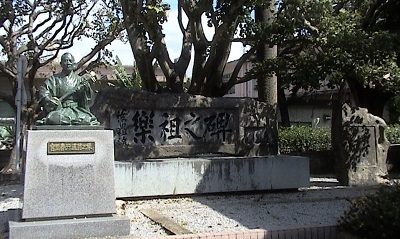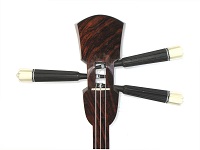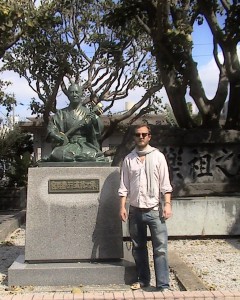 fuso-ryū 安冨祖流 is one of the three schools of classical Ryūkyūan music. The other two schools are the Tansui-ryū and the Nomura-ryū.
fuso-ryū 安冨祖流 is one of the three schools of classical Ryūkyūan music. The other two schools are the Tansui-ryū and the Nomura-ryū.

The logo represents a stylized Japanese “a” in katakana, standing for Afuso. It was designed in 1960 by Sueyoshi Ankyū (1904-1981)
Yakabi Pēchin Chōki (1716-1775) was a close associate of King Shō Kei (1700-1752) and had a great musical talent as a teacher of nō. Yakabi reformed the Ryūkyūan Sanchin music by using his knowledge and experience obtained through nō drama, under consideration of old Ryukyu chants, as well as as by incorporating the teachings of Tansui Uēkata (1623-1683) as handed down by each of the masters Takushi, Shinzato, and Terukina. Yakabi added new compositions and for the first time in Ryūkyū used Chinese musical tabulature. In this era Ryūkyūan classical music was called Tō-ryū. His teachings were handed down to Toyohara Satonushi Pēchin and to Nakada Satonushi Pēchin.

Sueyoshi Ankyū (1904-1981) designed the “Monument of the Ancestor of Music” of the Afuso-ryū of classical Ryukyuan music.
Toyohara in turn taught the great musical talent Chinen Sekkō (1761-1828). Chinen examined the musical scores collected by Yakabi, corrected and modified various parts, added his own works like kafū (flower breeze) and others. In this way he completed the musical score collection called kunkunshi, which is a unique Okinawan tabulature.
 Chinen was followed by his student Afuso Pēchin Seigen (1785-1865), the actual founder of the Afuso-ryū. Afuso’s successor was Amuro Pēchin, who in turn taught Kin Ryōjin (1873-1936), who laid the foundation for the current Afuso-ryū: In 1927 the Afuso-ryū Genseikai was established with Kin Ryōjin at its center. It is said that 240 songs for the Sanchin have been handed down.
Chinen was followed by his student Afuso Pēchin Seigen (1785-1865), the actual founder of the Afuso-ryū. Afuso’s successor was Amuro Pēchin, who in turn taught Kin Ryōjin (1873-1936), who laid the foundation for the current Afuso-ryū: In 1927 the Afuso-ryū Genseikai was established with Kin Ryōjin at its center. It is said that 240 songs for the Sanchin have been handed down.

The author at the Monument of the Afuso-ryū close to the Okinawa Prefectural Library in Naha. 2008/2.
© 2015, Andreas Quast. All rights reserved.
